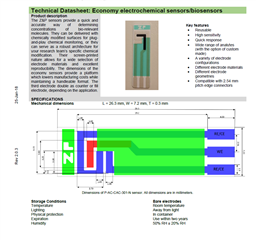Tool/software:
Hello TI,
I am designing a glucose meter and using the LMP91000 as the main AFE (Analog Front End). I need help with the schematic and component selection. The meter will measure multiple parameters, including:
- Glucose
- Hemoglobin
- Creatinine
- Cholesterol
- Uric acid
1. Schematic Design Request
Could you please provide a reference schematic for using the LMP91000 in a glucose meter? I need guidance on the recommended circuit design, including connections for the working, counter, and reference electrodes.
2. Operational Amplifier Recommendation
In case I need an alternative to the LMP91000, can you suggest suitable operational amplifiers that can be used for biosensing applications?
3. Strip Detection Mechanism
What is the best way to detect when a test strip is inserted using a microcontroller? I am considering the following methods:
- Electrical contact detection
- Optical sensor detection
- Mechanical switch
- Capacitive/resistive sensing
Could you provide recommendations or best practices for strip detection?
4. Additional Suggestions
Any other important considerations or best practices from your experience in glucose meter design would be highly appreciated.
Looking forward to your expert guidance.
Thank you!


